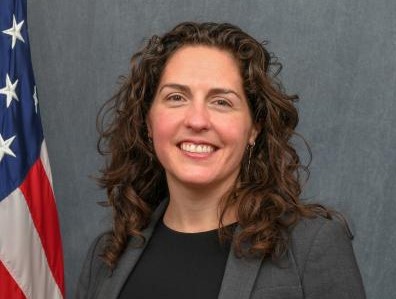As part of the Biden-Harris administration’s goal of deploying 30 GW of offshore wind energy capacity by 2030, the Department of the Interior has released the next steps to bring the opportunity of offshore wind energy to the Gulf of Maine. The Bureau of Ocean Energy Management (BOEM) has made available a Request for Interest (RFI) and Request for Competitive Interest (RFCI) in the Federal Register for public comment.
“President Biden has set ambitious goals to address the climate crisis, and in response the Interior Department is taking historic steps to develop a robust and sustainable clean energy future,” states Secretary Deb Haaland. “This announcement for the Gulf of Maine represents one of the many milestones that this administration has achieved to advance offshore wind development, create good-paying jobs and lower consumer energy costs, while collaborating with our government partners, Tribes and key stakeholders to protect biodiversity, advance environmental justice and safeguard other ocean uses.”
“As we work to spur offshore wind development and deploy floating offshore wind technology nationwide, BOEM recognizes the rich cultural heritage and ecological importance of the Gulf of Maine region, which is why we are using the best available science and traditional knowledge from ocean users and other stakeholders in our planning and leasing process,” says BOEM Director Amanda Lefton. “We are committed to a transparent, inclusive and data-driven process that avoids or minimizes potential conflicts with marine life and ensures all ocean users flourish.”
Over the past year, the Biden-Harris administration has launched the American offshore wind industry by approving and celebrating the groundbreaking of the nation’s first two commercial-scale, offshore wind projects in federal waters. By 2025, the Interior Department plans to hold up to five additional offshore lease sales and complete the review of at least 16 plans to construct and operate commercial, offshore wind energy facilities, which would represent more than 22 GW of clean energy for the nation.
In addition, investments from the recently signed Inflation Reduction Act will lower energy costs by hundreds of dollars per year for families by making clean energy more affordable and accessible. The act will create good-paying jobs by spurring an unprecedented expansion in clean energy deployment and manufacturing of more than 120,000 wind turbines.
The RFI is the first step in BOEM’s commercial planning and leasing process to identify the offshore locations that appear most suitable for development, taking into consideration potential impacts to other resources and ocean users. The purpose of the RFI is to gauge interest in the development of commercial wind energy leases within the RFI Area, which consists of about 13,713,800 acres in the Gulf of Maine.
Through the RFI, BOEM seeks feedback from stakeholders, industry, Tribes, ocean users and others regarding the location and size of specific areas they wish to be included in (or excluded from) a future offshore wind energy lease sale, along with other planning considerations. This information will be used to narrow the area to be considered for offshore wind development as BOEM moves forward with the Gulf of Maine planning and leasing process.
The RFCI is the next step in processing the State of Maine’s application for a research lease and provides notice of the proposed research area that Maine requested. BOEM is issuing this RFCI because the Outer Continental Shelf Lands Act and implementing regulations require that BOEM determine whether competitive interest exists in any area that is the subject of an unsolicited lease request.
If BOEM does not receive any indications of competitive interest for a lease in response to this notice, BOEM will move forward with the research application. However, if one or more indications of competitive interest from qualified entities are submitted, BOEM may decide to move forward with the lease issuance process using competitive leasing procedures.
Maine’s application requests 9,700 acres on the Outer Continental Shelf more than 20 nautical miles off the Maine coast. If developed, the research array would comprise up to 12 floating offshore wind turbines capable of generating up to 144 MW of renewable energy. BOEM invites submission of indications of commercial interest, as well as comments from interested and affected parties.
The RFCI Area (68,320 acres) expands upon Maine’s requested research lease area to allow future siting flexibility to avoid or minimize conflicts with existing ocean users should a lease (research or commercial) be issued. Only a project that is approximately the size of Maine’s research lease proposal (i.e., no more than 10,000 acres and no more than 12 floating turbines) and provides a conceptual framework for addressing the research priorities identified in the RFCI will have the potential to move forward.
BOEM continues to work closely with its federal, Tribal and state partners to employ the best available science, information and knowledge. This collaborative effort will identify the least conflicted areas that still deliver the renewable energy capacity necessary to meet the targets set by this administration and state renewable energy goals. BOEM is funding several priority studies to inform any potential commercial leasing and development in the Gulf of Maine.
BOEM has invested $80 million to collect baseline information in the Atlantic Ocean and Gulf of Maine to date. Recently funded studies include a BOEM ecosystem-based management study, an ecological baseline study of the U.S. Outer Continental Shelf Off Maine, and a comprehensive assessment of existing Gulf of Maine ecosystem data and identification of data gaps to inform future research. In conjunction with the SIEBA study, BOEM will be working with the National Oceanic and Atmospheric Administration’s National Centers for Coastal Ocean Science to develop ecosystem-based models to support and inform BOEM’s identification of lease areas.




